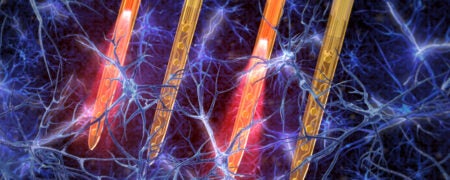Our sensory organs are exquisitely designed for bringing sensory information about our world to our brain. However, it is our brain’s ability to process this information that allow us to actually perceive the world.
The goal of sensory substitution is to convey the information transduced by one sensory system through a novel sensory modality. One example is vibrotactile (VT) speech, for which acoustic speech is transformed into vibrotactile patterns. Despite an almost century-long history of studying vibrotactile speech, there has been no study of the neural bases of VT speech learning. In a collaboration with Dr. Lynne Bernstein’s group at George Washington University (that included Drs. Ed Auer and Silvio Eberhardt), we trained hearing adult participants to recognize words presented via a custom-built MRI-compatible vibrotactile transducer (built by Silvio Eberhard).

Learn more:
ResearchGate
Journal of Neuroscience




